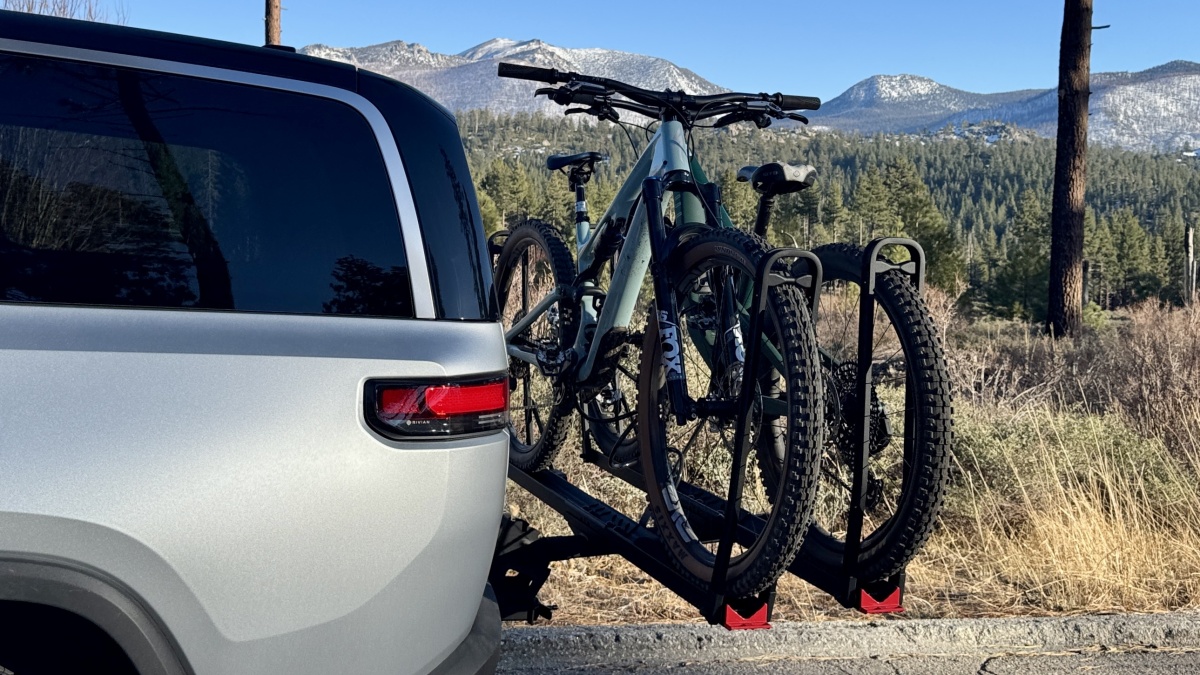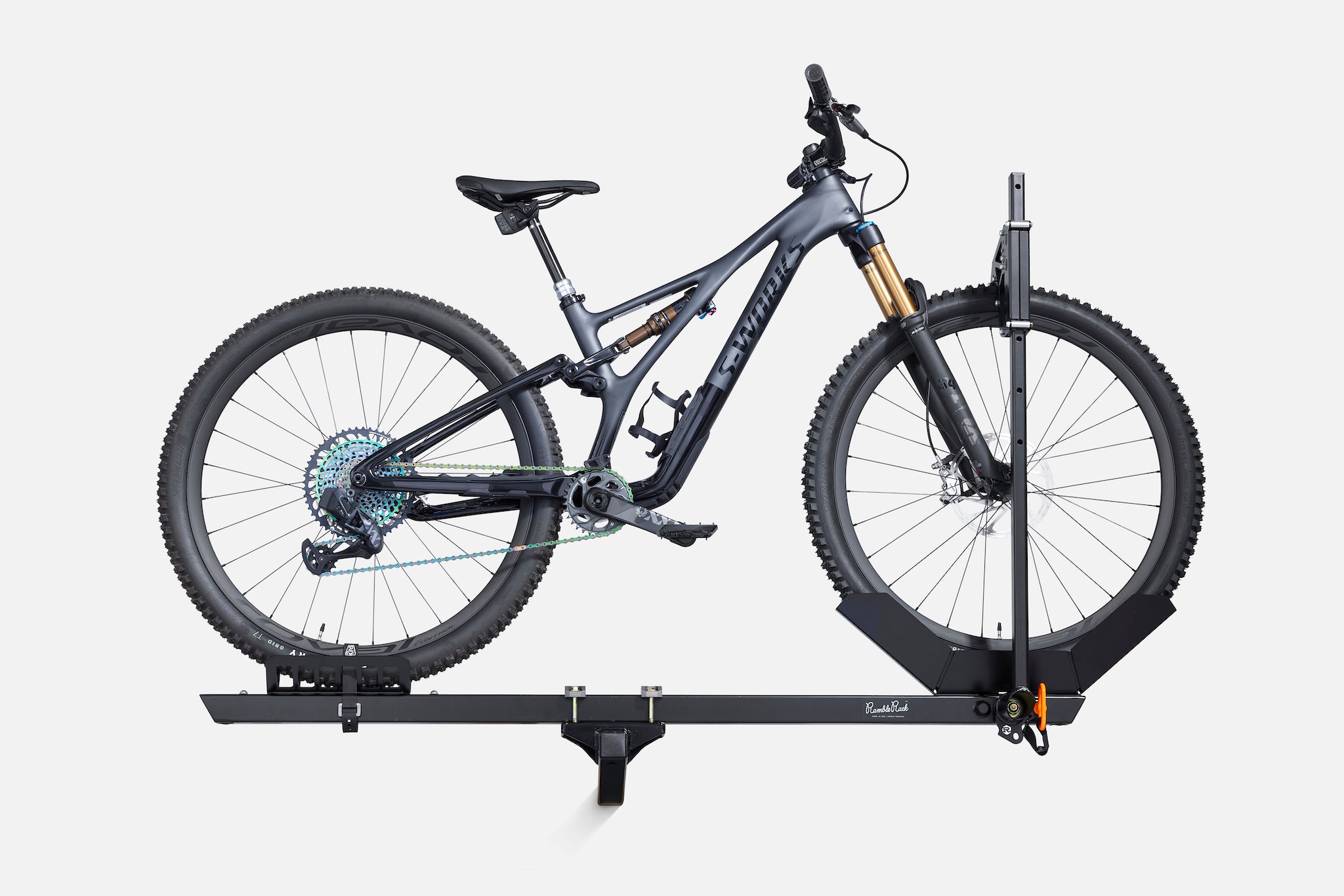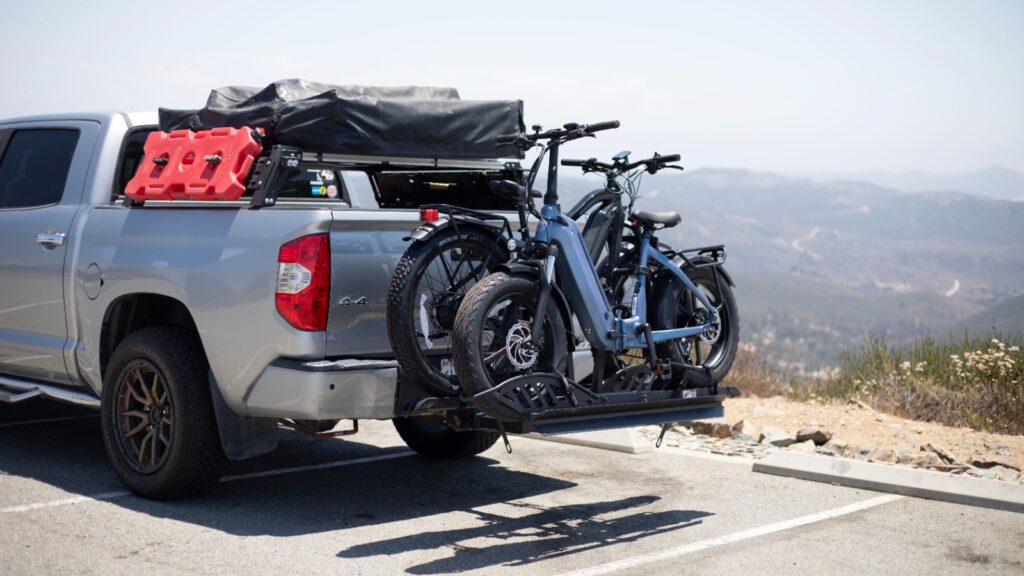Explore the Various Sorts Of Bike Rack and Their Practical Applications for Biking Enthusiasts
The selection of bike Racks readily available today satisfies the diverse demands of biking lovers. From freestanding to wall-mounted alternatives, each design uses one-of-a-kind benefits for storage space and transport. Mobile Racks additionally provide versatility for those on the move. Nevertheless, picking the optimal kind requires cautious factor to consider of details demands. Comprehending these variables can make a significant difference in both ease and security for bicyclists. What are the vital factors to consider when choosing a bike shelf?
Understanding Bike Rack Enters
Different kinds of bike Racks accommodate the diverse requirements of bicyclists. Amongst the most typical are freestanding racks, usually located in city locations, which permit multiple bikes to be secured in a compact space. Wall-mounted Racks serve those with limited flooring space, offering an effective option for home storage. Additionally, mobile bike shelfs, made for convenience of transportation, allure to cyclists who frequently take a trip.

Hitch-Mounted Bike Racks
Hitch-mounted bike Racks use a practical option for transporting bicycles, yet recognizing their installment process is necessary for efficient use. Users should additionally take into consideration the weight capacity of these Racks to assure safety and stability while taking a trip. In addition, compatibility with numerous car types plays a substantial duty in identifying the right rack for specific needs.
Installation Process Review
When choosing a hitch-mounted bike rack, comprehending the setup procedure is crucial for assuring safety and convenience. The user must confirm compatibility between the automobile and the rack's hitch receiver. Many Racks are made for either 2-inch or 1.25-inch receivers. After selecting the proper rack, the installation starts with securing the shelf right into the drawback receiver and tightening up the hitch pin or bolt to avoid motion. Proper alignment is crucial to ascertain the shelf does not obstruct tail lights or license plates. Once installed, it is suggested to look for stability by applying slight pressure to the rack. Complying with the manufacturer's instructions will guarantee an effective installment, advertising a secure cycling experience when traveling.
Weight Capability Considerations

Compatibility With Car Kind
Selecting the ideal bike rack involves validating compatibility with different lorry types. Hitch-mounted bike Racks are designed to connect to the rear drawback receiver of an automobile, making them suitable for a vast array of suvs, cars and trucks, and trucks. However, it is essential to inspect the drawback class and weight ability to validate an appropriate fit. The majority of hitch-mounted Racks work with 1.25-inch and 2-inch receivers, accommodating cars outfitted with proper towing abilities. Additionally, customers need to consider their automobile's elevation and layout, as some Racks may obstruct back access or require added clearance. Eventually, recognizing lorry specs validates that cycling enthusiasts can firmly carry their bikes without compromising safety and security or performance.
Trunk-Mounted Bike Racks
Trunk-mounted bike Racks offer a practical service for cyclists looking for a reliable method to transport their bikes. Understanding the installation process is essential for ideal use, as incorrect setup can bring about security issues. In addition, thinking about the weight ability of these Racks assurances that they can firmly hold the bikes without danger of damage or failure throughout transportation.
Setup Process Review
Many cycling fanatics value the convenience of trunk-mounted bike Racks for their convenience of use and convenience. The installment procedure commonly starts with unloading the shelf and acquainting oneself with its parts. The majority of Racks come with adjustable bands and hooks made to protect them to the lorry's trunk or hatch. Users ought to verify the rack is positioned properly, straightening it with the vehicle's contours for stability. Complying with the supplier's directions, the bands are then tightened securely, ensuring a tight fit. It's vital to check that the rack does not obstruct the automobile's lights or license plate. Verifying that all links are safe prior to packing bikes is crucial for safe transportation. Correct installment improves both security and effectiveness during biking trips.
Weight Ability Considerations
When thinking about a bike rack for transferring bicycles, weight capacity is a crucial element that can not be neglected. Trunk-mounted bike Racks usually carry weight restrictions that vary depending on the version and design. It is important for customers to examine these specifications to ensure they do not go beyond the suggested weight, as doing so can compromise both safety and security and vehicle stability. Most trunk-mounted Racks can sustain one or two bikes, with a combined weight ability varying from 70 to 120 pounds. Cyclists need to likewise take into consideration the weight of their bicycles, specifically if they have larger models like electric bikes. Properly matching the rack's weight capacity with the bikes' weights assures a safe and protected transport experience.
Roof-Mounted Bike Racks
Roof-mounted bike Racks offer a streamlined remedy for transporting bicycles, supplying cyclists with the benefit of making the most of freight area. These Racks are designed to hold bikes safely atop the automobile, permitting easy access to the rear of the vehicle and preventing blockages to the certificate plate or tail lights. They are optimal for individuals that often take a trip with their bikes, as they can accommodate various bike designs and dimensions.
Installation commonly includes connecting the shelf to the vehicle's crossbars, making certain a stable and risk-free fit. Roof-mounted Racks are frequently aerodynamic and lightweight, which can result in enhanced gas performance compared to various other sorts of racks. Individuals must take into consideration the height of their car when loading and discharging bikes, as well as possible difficulties when entering garages or low-clearance areas - Bike Rack. Generally, roof-mounted bike Racks use a flexible and effective choice for passionate cyclists on the move
Wall-Mounted Bike Racks
Wall-mounted bike Racks supply an effective solution for cyclists looking for to optimize limited room while safely storing their bicycles. These Racks are excellent for metropolitan occupants or those with small garages, as they elevate bikes off the ground and make use of vertical space. Made from durable products, wall-mounted choices can suit numerous bike types, consisting of road, mountain, and crossbreed bikes.
Setup is straightforward, allowing customers to mount them in garages, cellars, or also outside rooms. Lots of layouts enable one or several bikes, making them versatile for specific or household use. Additionally, some wall-mounted Racks come with integrated locks or safety and security features to hinder theft, enhancing comfort for bikers.
Mobile Bike Racks
Portable bike Racks provide cyclists a convenient and adaptable service for transferring their bicycles. These Racks are designed for easy installation and removal, making them excellent for those who need to regularly change in between places or lorries. Compact and commonly light-weight, portable bike Racks can be quickly stored in a trunk or garage, minimizing the problem of irreversible installments.
There are various kinds of mobile bike shelfs, consisting of hitch-mounted, trunk-mounted, and roof-mounted options, each dealing with different vehicle types and bicyclist choices. Hitch-mounted Racks supply stability and ease of access, while trunk-mounted Racks are commonly extra versatile and economical. Roof-mounted Racks are great for taking full advantage of cargo space but might call for some lifting.
Choosing the Right Bike Shelf for Your Requirements
Exactly how can one determine the most effective bike rack to match their specific cycling requirements? Identifying the right bike rack includes reviewing numerous aspects. One have to take into consideration the type of automobile made use of for transport, as Racks are developed for different placing systems, such as trunk, hitch, or roof covering. Next off, the variety of bikes to be brought is necessary; some Racks accommodate just one, while others can hold several bikes effectively. Additionally, determining the weight and frame design of the bikes is considerable, as particular Racks are much better suited for much heavier or uniquely shaped bikes. Lastly, intended usage should be taken into consideration; regular travelers may favor an extra mobile alternative, while occasional users could prioritize simplicity and ease of setup. By meticulously evaluating these considerations, people can select a bike rack that fulfills their requirements and improves their cycling experience.

Frequently Asked Inquiries
Can Bike Racks Accommodate Different Bike Sizes and Styles?
Bike Racks vary in layout, allowing holiday accommodation for various bike sizes and designs. Some Racks feature adjustable elements, while others are specifically customized for sure bicycles, making certain safe and secure storage and simple ease of access no matter the bike's specifications.
How Do I Properly Protect My Bike on a Rack?
To properly safeguard a bike on a rack, one must ensure the structure and wheels are securely attached using Hitch Bike Rack bands or locks, examining for security and avoiding activity during transport to stay clear of damage.
Are Bike Racks Easy to Eliminate and mount?
Bike Racks differ in installment complexity, but several are developed for user-friendliness. Removable versions usually offer uncomplicated setup and removal, while permanent installations may call for devices and more time, relying on the details layout.

What Materials Are Bike Racks Typically Made From?
Bike Racks are typically made from materials such as steel, aluminum, and plastic. E Bike Rack. Steel gives durability and strength, while aluminum offers light-weight mobility. Plastic choices are often developed for ease of usage and cost
Do Bike Racks Affect Fuel Performance When Driving?
The question of whether bike Racks influence gas effectiveness when driving is significant. Research studies show that bike Racks can boost wind resistant drag, potentially causing lowered fuel performance, especially at greater rates or with extra weight.
After choosing the appropriate shelf, the setup begins with securing the shelf right into the hitch receiver and tightening the drawback pin or screw to protect against activity. Roof-mounted Racks are typically aerodynamic and light-weight, which can lead to improved gas efficiency contrasted to various other kinds of shelfs. Hitch-mounted Racks provide security and ease of access, while trunk-mounted Racks are typically a lot more affordable and functional. Next off, the number of bikes to be carried is important; some Racks fit only one, while others can hold numerous bikes efficiently. Bike Racks differ in style, allowing lodging for various bike sizes and designs.